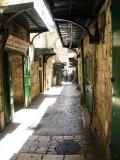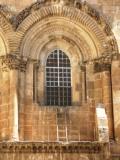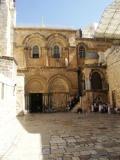
by John Strong
June 18, 2011
“In days to come the mountain of the Lord’s house shall be established as the highest of the mountains, and shall be raised above the hills, all the nations shall stream to it. Many peoples shall come and say, ‘Come, let us go up to the mountain of the Lord, to the house of the God of Jacob; that he may teach us his ways and that we may walk in his paths.’” [Isa 2:2-3]
I do not know if modern day Jerusalem is exactly what Isaiah had in mind, but today, his prophecy pretty well depicts what is going on in this cosmopolitan and volatile city. And today, I am streaming, along with much of the rest of the world to Jerusalem to learn from its instruction.
I have been to Jerusalem many times, and I am both fascinated by it and at the same time thankful that I do not live in Jerusalem, but rather in a town that goes largely unnoticed by the rest of the world. Jerusalem is first of all a modern city with a public light rail system, commerce, shops and wonderful restaurants, museums (some of the best in the world, in my opinion), and government offices and consulates. But at its heart is the “Old City,” which is the walled off city built by the Ottomons in the 16th century upon the ruins of the Romans and the Crusaders. Its “streets” twist and turn in a haphazard fashion, quickly confusing anyone accustomed to a nice, neat grid system of a planned city. And, true to its cosmopolitan nature, the Old City is divided into four “quarters,” designated as Jewish, Muslim, Christian, and Armenian.
One must, then, have a sense of adventure to enjoy the confusion that is the Old City, and if one does that, then one is in store for a wonderful day of discovery. Today, my focus was on the Church of the Holy Sepulcher. This is the large church that encompasses the small rocky outcropping where Jesus was, according to Christian tradition, crucified, and also the remnants of what pilgrims have thought to be his tomb. Of course, all of those pilgrims over the last two millennia have thought it a good idea to chip away a little keepsake from his tomb to take home to friends and family, and thus, today, there is just a small little chapel, guarded by a priest, with a long line of modern day pilgrims from around the world waiting to step inside for just a moment. Fortunately, chisels are no longer allowed.
Perhaps illustrative of Jerusalem today, as well as the Middle East as a whole, is the fact that since the mid-19th century, the Church of the Holy Sepulcher has been, just like the Old City itself, divided between six different churches, each in charge of very well defined spaces, which are in turn defended.
This is all serious business, but at times it gets comical. For example, there is a ladder that was placed below a window in the 19th century and which has never been moved since because it is not a part of the agreement and therefore its control is under dispute. It is there to this day.

And so, the nations stream to this holy city for instruction. I do not know if the pilgrims who journey here learn tolerance from the confluence of religious faiths active in this small space, or if they see only the comedy of the disputes. I can really only speak for myself, and I hope that I am learning toleration—but only my actions, walking in the path of God, to borrow Isaiah’s words, will truly bear this out.

